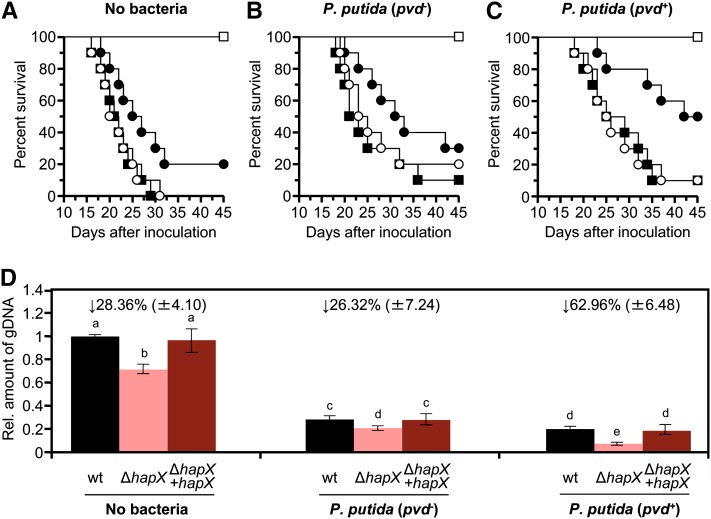Figure 10.
Loss of HapX Increases Biocontrol Activity of Siderophore-Producing P. putida against F. oxysporum on Tomato Plants.
(A) Groups of 10 tomato plants (cv Monika) were dip-inoculated with a microconidial suspension of the following fungal strains as described in Figure 7A: wild-type, filled squares; ΔhapX, filled circles; ΔhapX+hapX, empty circles; water control, empty squares.
(B) and (C) Before fungal inoculation, roots were submerged for 2 h in a suspension of 109 cells mL−1 of the indicated P. putida strain. The severity of disease symptoms was monitored periodically and percentage survival plotted for 45 d. Data shown are from one representative experiment.
(D) Quantitative real-time PCR was used to measure the relative amount of fungal DNA in total genomic DNA extracted from tomato roots at 7 DAI with the indicated microorganisms. Amplification levels are expressed relative to those obtained from plants infected with the F. oxysporum wild-type (wt) strain. Numbers above columns indicate the percentage reduction of fungal biomass in the ΔhapX strain relative to the wild-type strain in the same condition. Bars represent se from three independent experiments with three technical replicates each.
[See online article for color version of this figure.]

